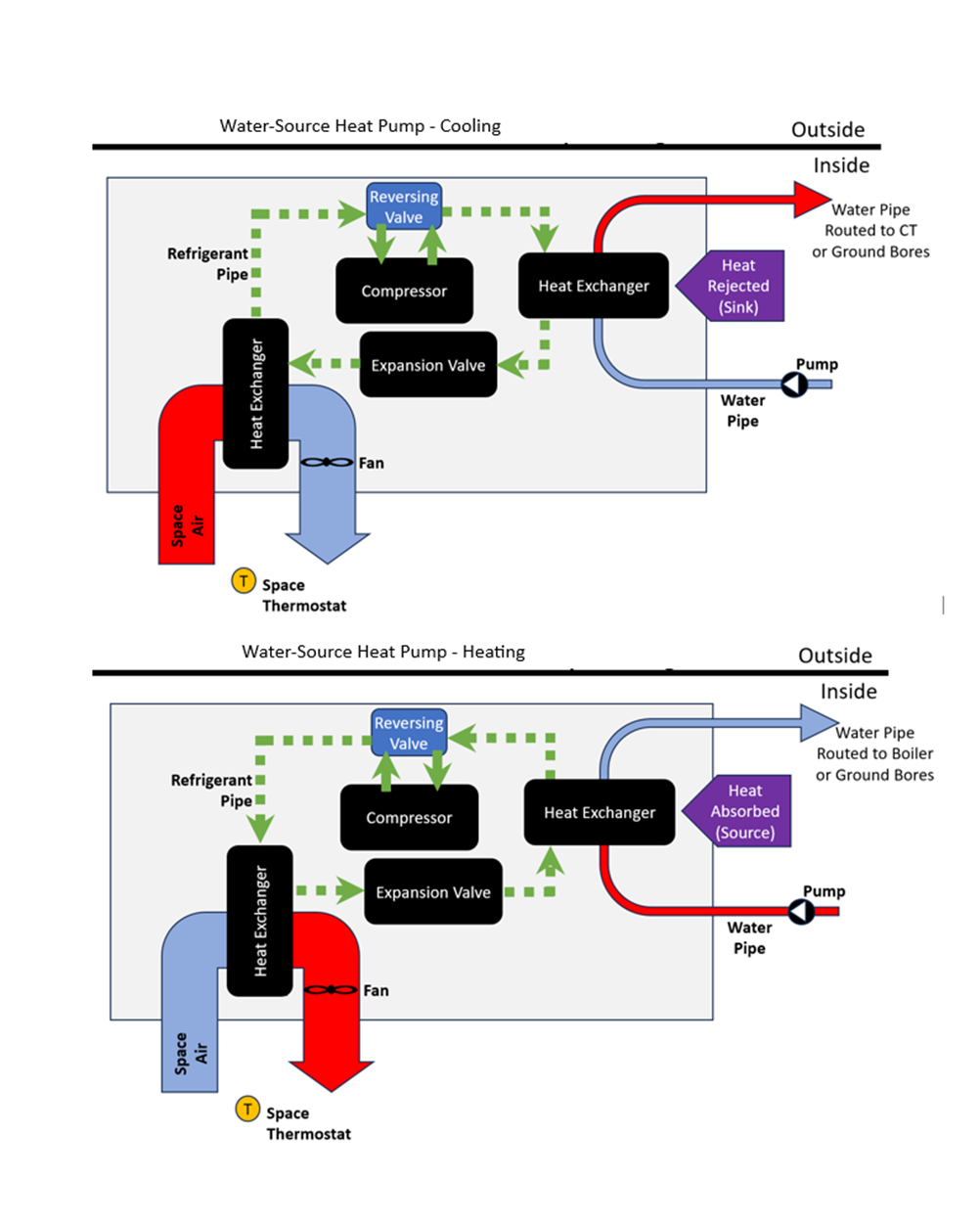Water-source heat pumps operate the same way as an air-source heat pump, with the difference being that piped water is used to heat or remove heat instead of the outside air.
Water-source heat pumps work under the same principle as the air source heat pump with the difference being that outside air is not used as the heat source or heat sink, but instead piped water is utilized. Using piped water allows some heat pump configurations the option to be located inside the building, others may be configured as a rooftop unit.
A water source heat pump is different from other hydronic systems because the water is not routed in the coil conditioning the air stream, instead the water simply provides the opportunity to absorb and reject heat from the DX cycle. The refrigerant in the coil still provides the heating or cooling at the space air heat exchanger coil. Since the refrigerant is doing the work and produces the more extreme temperatures for the system, the water simply needs to be kept with in a temperature range of 60 F and 90 F for a water source heat pump. This means that the boiler does not have to operate until the water temperature approaches 60 F and the cooling tower can remain off until the water temperature approaches 90 F.
In a geothermal or ground source heat pump system, ground bores can be used in lieu of the boiler and cooling tower. Ground bores are a series of pipes that are routed into the ground. Because ground temperature is naturally approximately 50 - 65 F the ground can act as a heat source or heat sink for the water from the heat pump system. When the loop temperature drops below ground temperature in the heating season, the ground serves as a heat source (the loop absorbs heat) and it can be a heat sink in the cooling season when the water temperature is higher than the ground temperature (the loop rejects heat). In the case of a geothermal heat pump, the bore field can also be bypassed until the water temperatures approach the limits of the acceptable range.
- When there are multiple units connected together by the water piping, it is not uncommon for some heat pump units to operate in heating while others are cooling during the shoulder seasons (spring and fall). In this circumstance, heat being absorbed from the water by one unit is being balanced by the heat rejected to the water by another. Allowing for extended periods of time with the loop temperature remaining in range.
- That the boilers and cooling towers operate less than in traditional hydronic heating hot water or chilled water air handling unit system.
- Water circulating pumps can modulate capacity, saving operational energy.
- In a geothermal system the ground temperature, which is used as a heat exchanger, is moderate year-round.

